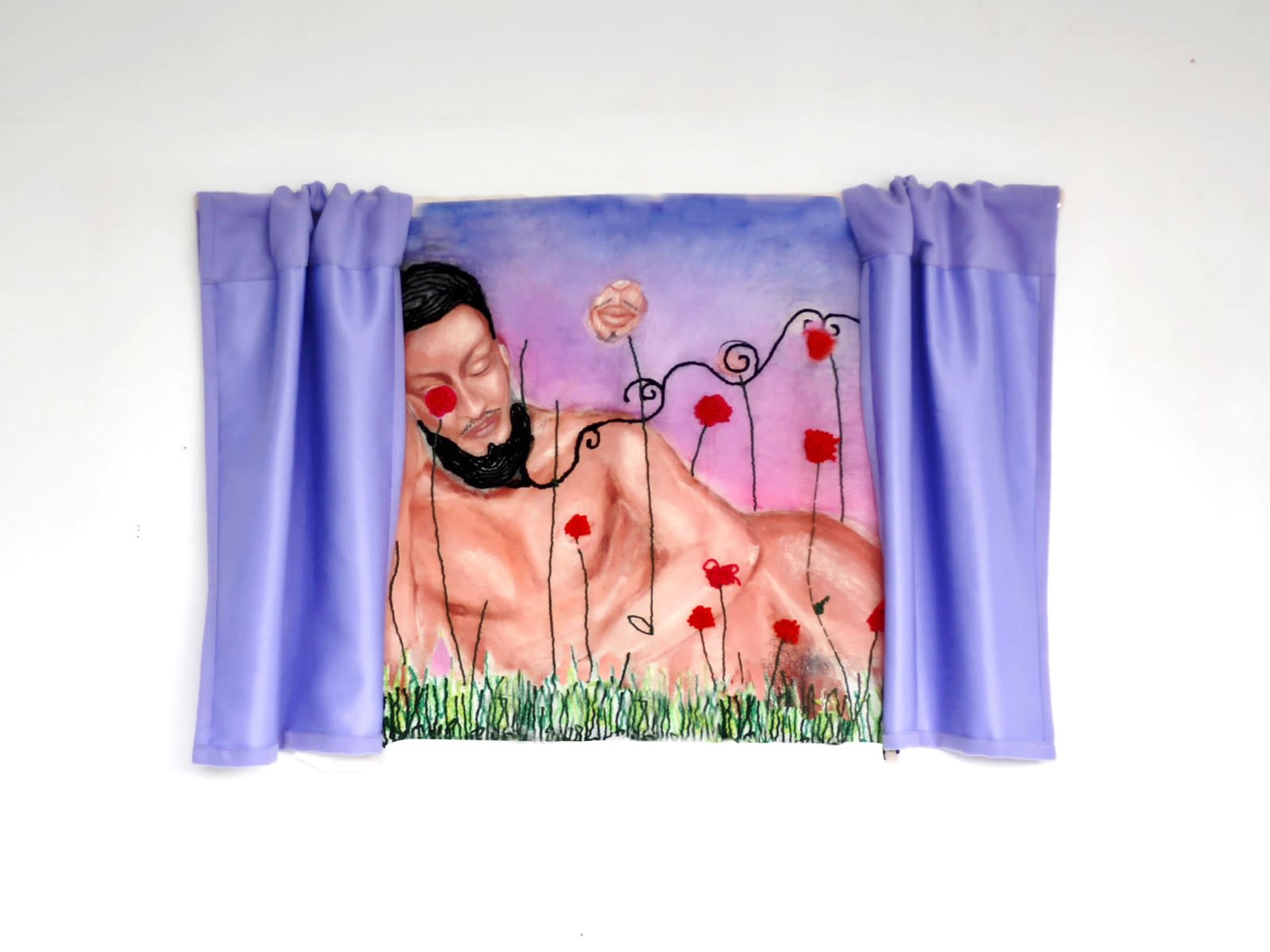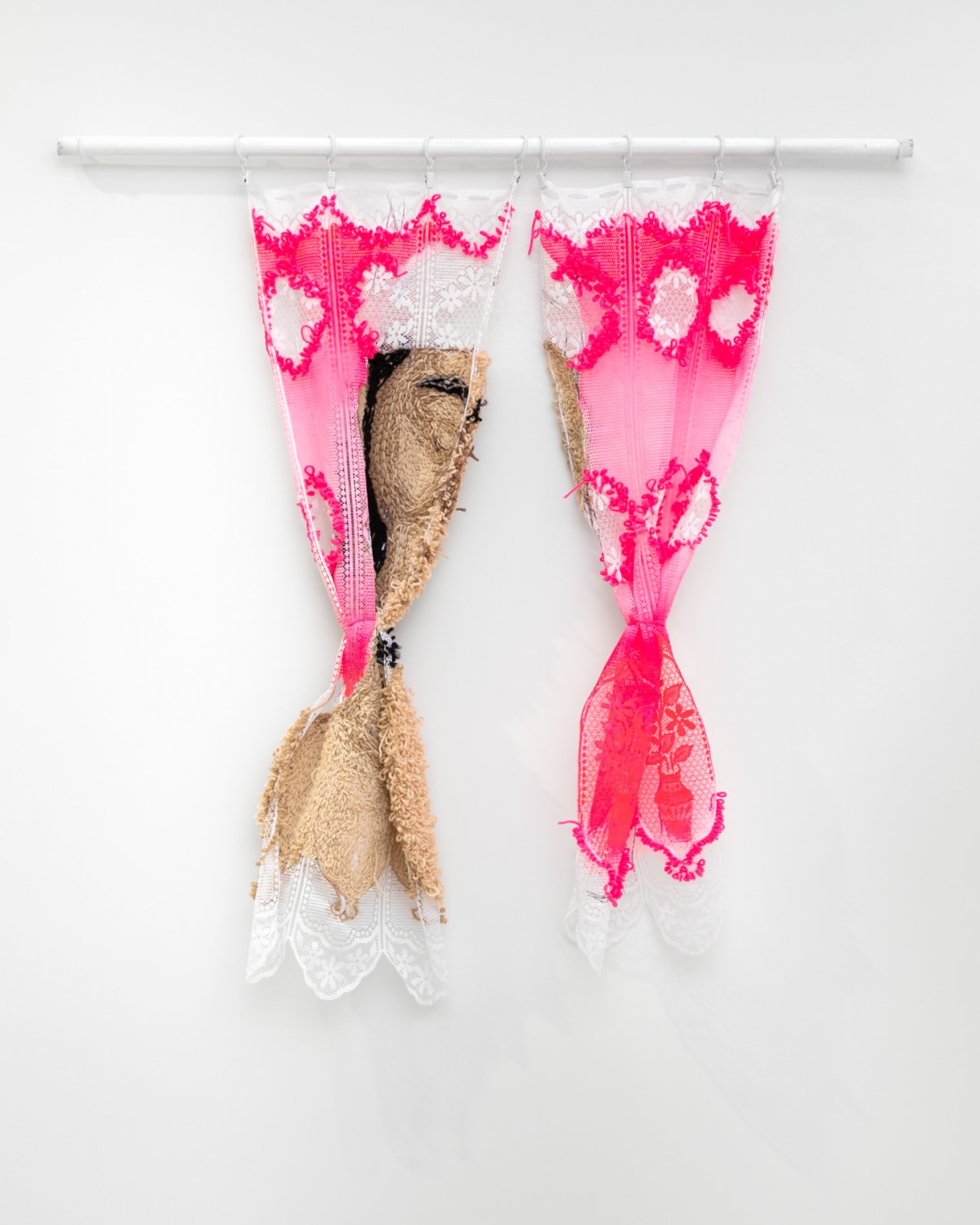We are pleased to welcome you to our presentation at Market Art Fair 2025, where we introduce two artists that both combine a profound material awareness with a contemporary gaze: Ranti Bam and Amine Habki. In booth 27, we will present four ceramic sculptures by Bam alongside three textile works and a drawing by Habki – artists who are being shown to a Scandinavian audience for the first time.
In their respective practices, both Bam and Habki return to techniques and materials traditionally associated with craft – ceramics and textiles – which they reinterpret and infuse with new meanings. While their expressions diverge, Bam and Habki are united in their exploration of the body, identity and the personal in relation to the collective.
Ranti Bam (b. 1982, Lagos) is based in London and Paris, and works with clay as a narrative and transformative material. Her performative process – shaping the clay with her body and embracing it before firing – becomes a ritual of transformation, where intimacy and presence are central. The sculptures presented at Market are from her ongoing Ifa series, previously shown at the 2023 Liverpool Biennial. By opening the ceramic form to cracks and reconstruction, Bam reflects on healing, memory and community.
Bam held her first solo exhibition at Andréhn-Schiptjenko in Paris in 2024, and was recently exhibited at James Cohan Gallery in New York. Her work has also been included in group exhibitions such as Insistent Presence: Contemporary African Art from the Chazen Collection(2023), Chazen Museum of Art, Wisconsin, USA and Hard/Soft: Textiles and Ceramics in Contemporary Art (2023), Museum of Applied Arts, Vienna, Austria. Bam is represented in several public collections, including the V&A (London), the Brooklyn Museum (New York) and Fondation Thalie (Brussels). She currently has a residency at Black Rock Senegal.
Amine Habki (b. 2000, Nantes) is based in Paris and recently graduated from École Nationale Supérieure d’Art de Paris-Cergy. His textile works exist at the intersection of sculpture, painting and embroidery. Drawing on his Franco-Moroccan heritage, traditional notions of masculinity are renegotiated through vulnerability, colour and materiality. Using recycled textiles, soft materials and vivid colours, Habki creates intricate works that carry micro-narratives – fragments of his ongoing exploration of identity.
In Habki’s work, the body is both present and absent; by deconstructing the archetype of the virile, high-performance male, space is created for alternative narratives of desire, intimacy and belonging. The works are not autobiographical, but rather embody alter egos that give voice to the marginalised and unseen. Through his choices of colour, surface treatment and the dynamic between front and reverse, a formal and existential complexity emerges.
Last year, Habki presented a solo project at Centre Pompidou-Metz, and in November he will hold his first solo exhibition at Andréhn-Schiptjenko in Stockholm.








